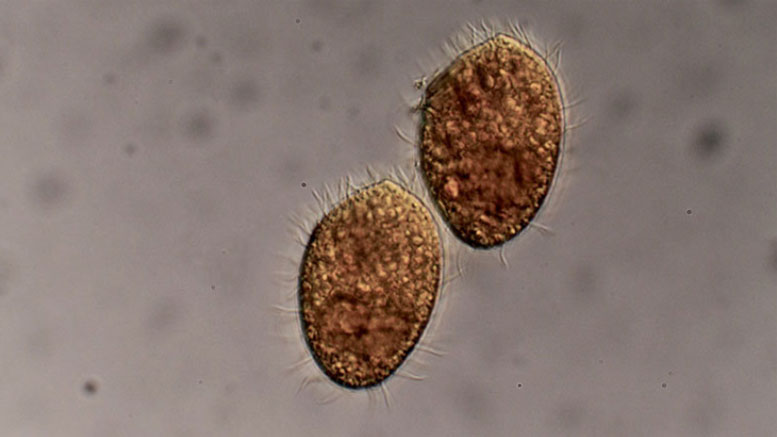
Even bacteria have enemies – in water, for example, single-celled ciliates preferably feed on microbes. The microbes protect themselves against predators by employing a variety of tricks, which the ciliates, in turn, attempt to overcome. There ensues an evolutionary competition for the best attack and defense mechanisms. According to scientists from the Max Planck Institute for Evolutionary Biology in Plön, prey such as bacteria have, in the long run, no choice but to maintain protection mechanisms, even if the effort involved is so high that they can barely produce offspring.
Predator and prey maintain a close relationship to each other: if one evolves, the other must keep pace. Such coevolution and its accompanying selection pressure lead to mutual adaptation of the two species.
In their experiments, Lutz Becks and his fellow Plön-based researchers from Plön, London, and Finland held bacteria and ciliates together for many weeks and traced their evolution. Here, they observed how the microbes protect themselves against the gluttony of the ciliates when, after a few days, the bacterial cells, normally living in isolation, began to grow in larger associations as a slimy “biofilm.” This meant they could no longer be foraged as effectively by the ciliates.
Costly defense
As long as the scientists allowed only the bacteria to evolve in their experiments and computer simulations, the bacteria were able to protect themselves well from being eaten – with acceptable effort. However, as soon as the ciliates were also allowed to evolve, protection came at a high cost to the bacteria: they then only produced few offspring. “Protection against predators, therefore, comes at a high cost, because the better the bacteria are equipped, the worse they reproduce,” says Becks.
The bacteria cannot, therefore, optimize both simultaneously – a typical case of evolutionary trade-off. However, what exact form this trade-off takes depends on whether the predator can adapt to the prey’s defense mechanisms. If so, defense becomes increasingly costly to the prey and barely any resources remain for reproduction. In contrast, if the predator cannot adapt, the prey requires fewer resources for defense and can invest more in producing progeny,” explains Becks.
Less diversity
In addition, the researchers demonstrated that predator diversity decreases when there is a dynamical trade-off. The ciliates thus develop fewer different types in order to adapt to bacterial associations and biofilms. “This is, of course, beneficial to the prey and could reduce the pressure on the bacteria,” says Becks.
The study shows that, surprisingly, more prey diversity does not always mean more predator diversity. Lutz Becks: “What is important are the costs and benefits of traits for prey and predator. As our experiments demonstrate, they can shift depending on whether or not the predator had time to adapt.”
Reference: “Dynamical trade-offs arise from antagonistic coevolution and decrease intraspecific diversity” by Weini Huang, Arne Traulsen, Benjamin Werner, Teppo Hiltunen and Lutz Becks, 12 December 2017, Nature Communications.
DOI: 10.1038/s41467-017-01957-8
Never miss a breakthrough: Join the SciTechDaily newsletter.